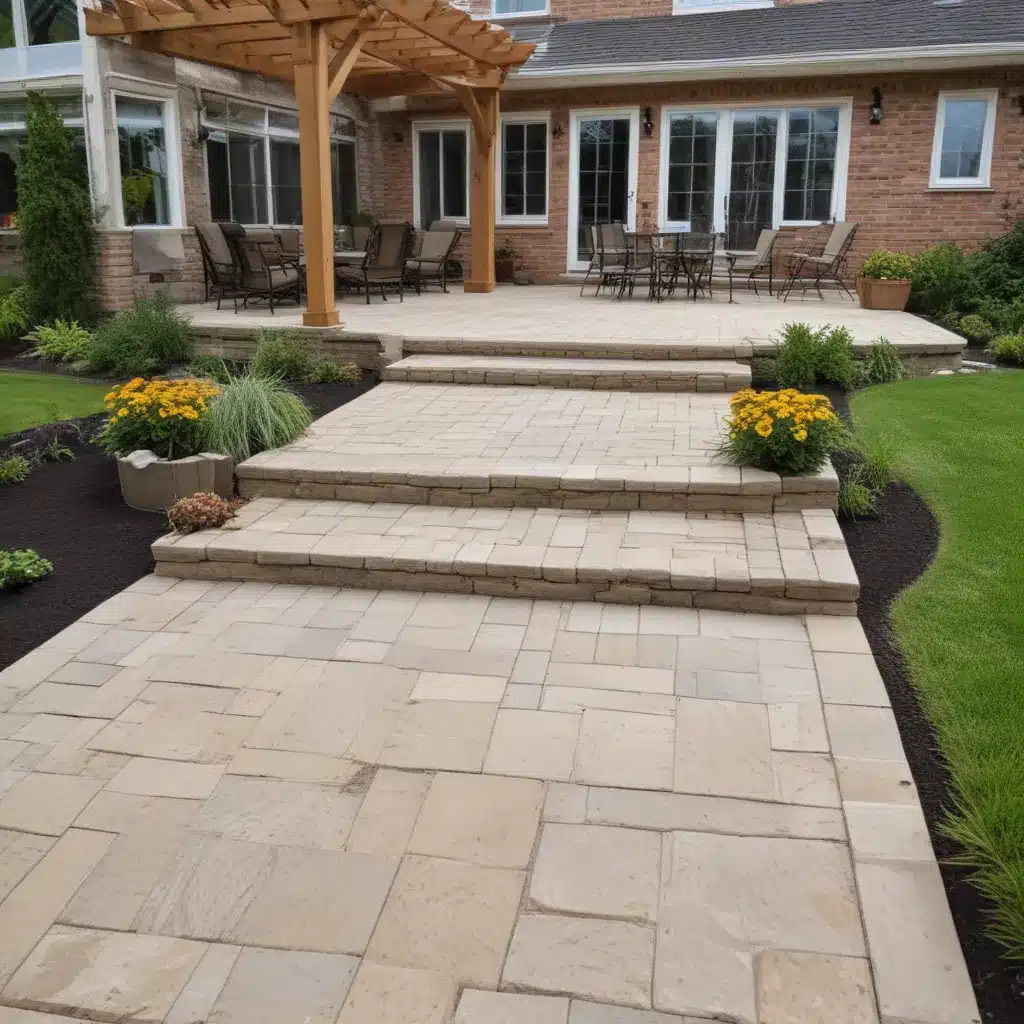
Patio Paving Trends and Outdoor Design Ideas
The world of patio paving has evolved significantly in recent years, with a growing emphasis on both functional and aesthetic considerations. Homeowners are increasingly seeking to create outdoor living spaces that seamlessly blend with their landscaping and offer a harmonious extension of their indoor environments.
Emerging Patio Paving Materials and Styles
Gone are the days of the ubiquitous concrete slab. Flagstone, natural stone, interlocking pavers, and permeable paving systems have become popular choices, each offering unique textures, colors, and design possibilities. Flagstone, with its irregular shapes and rustic appeal, can lend a timeless, natural feel to a patio. Alternatively, the clean lines and geometric patterns of interlocking pavers can create a more contemporary, minimalist aesthetic.
Integrating Hardscaping with Landscaping
The integration of hardscaping (paved surfaces) and landscaping (plants, greenery, and water features) is a key trend in outdoor living design. Homeowners are seeking to create cohesive, visually stunning environments that blur the lines between the built and natural elements. This might involve strategically placing paved pathways to guide the eye through lush garden beds, or incorporating water elements like fountains or reflecting pools into the patio design.
Creating Functional and Aesthetically Pleasing Outdoor Spaces
Beyond mere visual appeal, today’s patio designs prioritize functionality and livability. Features like built-in seating, outdoor kitchens, and fire pits transform patios into true outdoor living rooms, extending the usable square footage of a home. Careful consideration of traffic flow, shaded areas, and storage needs ensures that these spaces are not only beautiful, but also highly practical for everyday use.
Patio Paving Installation Techniques
Achieving a durable, long-lasting patio requires a solid foundation and attention to detail during the installation process. Proper site preparation and material selection are crucial to ensuring your patio paving project stands the test of time.
Proper Site Preparation and Drainage
Before any paving can begin, the site must be properly prepared. This typically involves excavating the area, compacting the soil, and installing a gravel base to provide a stable foundation. Ensuring adequate drainage is also essential to prevent issues like puddling or settling over time.
Selecting the Right Paving Materials
The choice of paving material can significantly impact the longevity and maintenance requirements of your patio. Flagstone, for example, is a durable natural stone that can withstand heavy foot traffic, while interlocking pavers offer a modular and customizable approach. Permeable paving systems, which allow water to infiltrate the ground, can be an eco-friendly option in areas prone to heavy rainfall.
Ensuring a Durable and Long-Lasting Installation
Proper installation techniques, such as laying the pavers in a specific pattern, tamping the base, and filling the joints, are crucial to creating a stable and level patio surface. Attention to detail during this process can help prevent common issues like cracking, shifting, or weed growth in the future.
Patio Paving Maintenance Guidelines
Maintaining the beauty and functionality of your patio paving is an ongoing process, but with the right approach, you can keep your outdoor living space looking its best for years to come.
Routine Cleaning and Upkeep
Regular sweeping, hosing, and power washing can help remove dirt, debris, and organic matter that can accumulate on the paved surface. Periodically refilling the joints with the appropriate material, such as stone dust or polymeric sand, can also help maintain the structural integrity of the patio.
Addressing Common Issues and Repairs
Despite your best efforts, patio paving can still be susceptible to weed growth, staining, or cracking. Addressing these issues promptly is crucial to preventing further damage. Weeding the joints, treating stains with specialized cleaners, and repairing any cracks or gaps can help restore the patio’s appearance and functionality.
Protecting Paved Surfaces from Weather and Wear
Exposure to the elements, such as rain, snow, and UV radiation, can take a toll on patio paving over time. Applying a sealant can help protect the surface from weathering and discoloration, while also making it easier to maintain. Regular inspection and proactive maintenance can help ensure your patio remains in top condition for years to come.
Cost Comparisons and Budget Considerations
When it comes to patio paving, the cost can vary widely depending on a range of factors. Understanding these considerations can help you make informed decisions and budget accordingly.
Factors Influencing Patio Paving Costs
The size of the patio, the complexity of the design, the choice of materials, and the labor costs in your local area can all impact the overall price tag. Flagstone and natural stone tend to be more expensive than interlocking pavers, while permeable paving systems may require additional installation costs.
Evaluating Long-Term Maintenance Expenses
While the initial investment in patio paving may be significant, it’s essential to consider the long-term maintenance requirements and associated costs. Some materials, such as polymeric sand, may require more frequent replacement or repairs, ultimately leading to higher maintenance expenses over time.
Balancing Quality, Aesthetics, and Budget
When planning your patio paving project, it’s important to strike a balance between quality, aesthetics, and budget. While it may be tempting to opt for the most cost-effective option, investing in durable, low-maintenance materials can often pay off in the long run, both in terms of appearance and functionality.
By understanding the latest trends, installation best practices, and maintenance strategies, you can create a beautiful and functional patio paving system that will serve you and your family for years to come. To learn more about patio paving and outdoor living solutions, visit Cincinnati Patiopaving.

